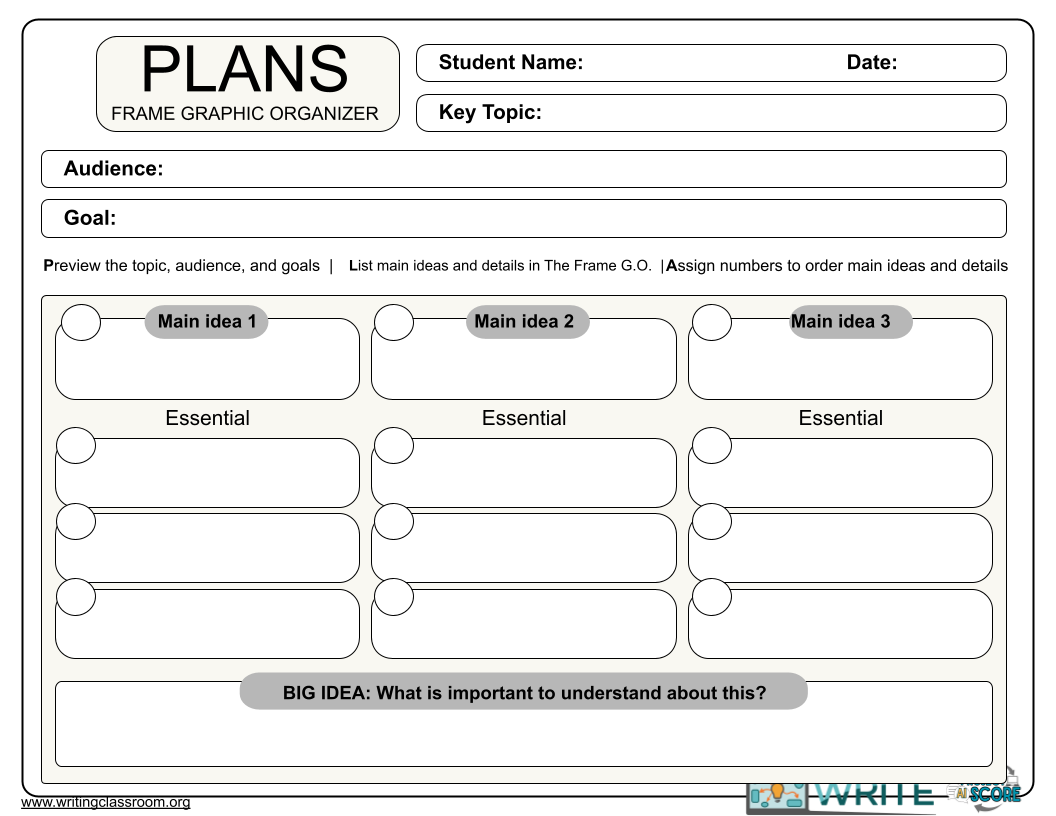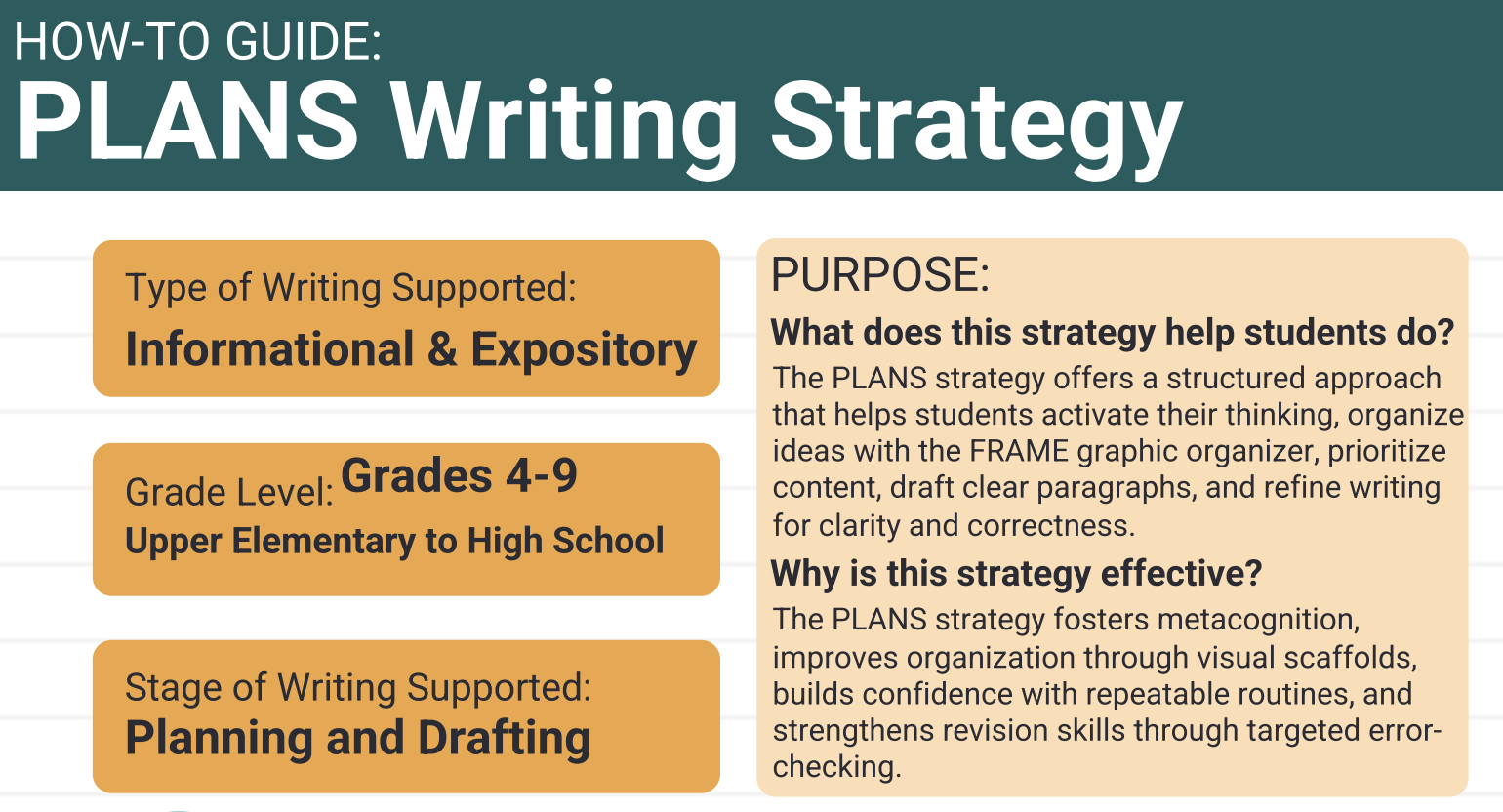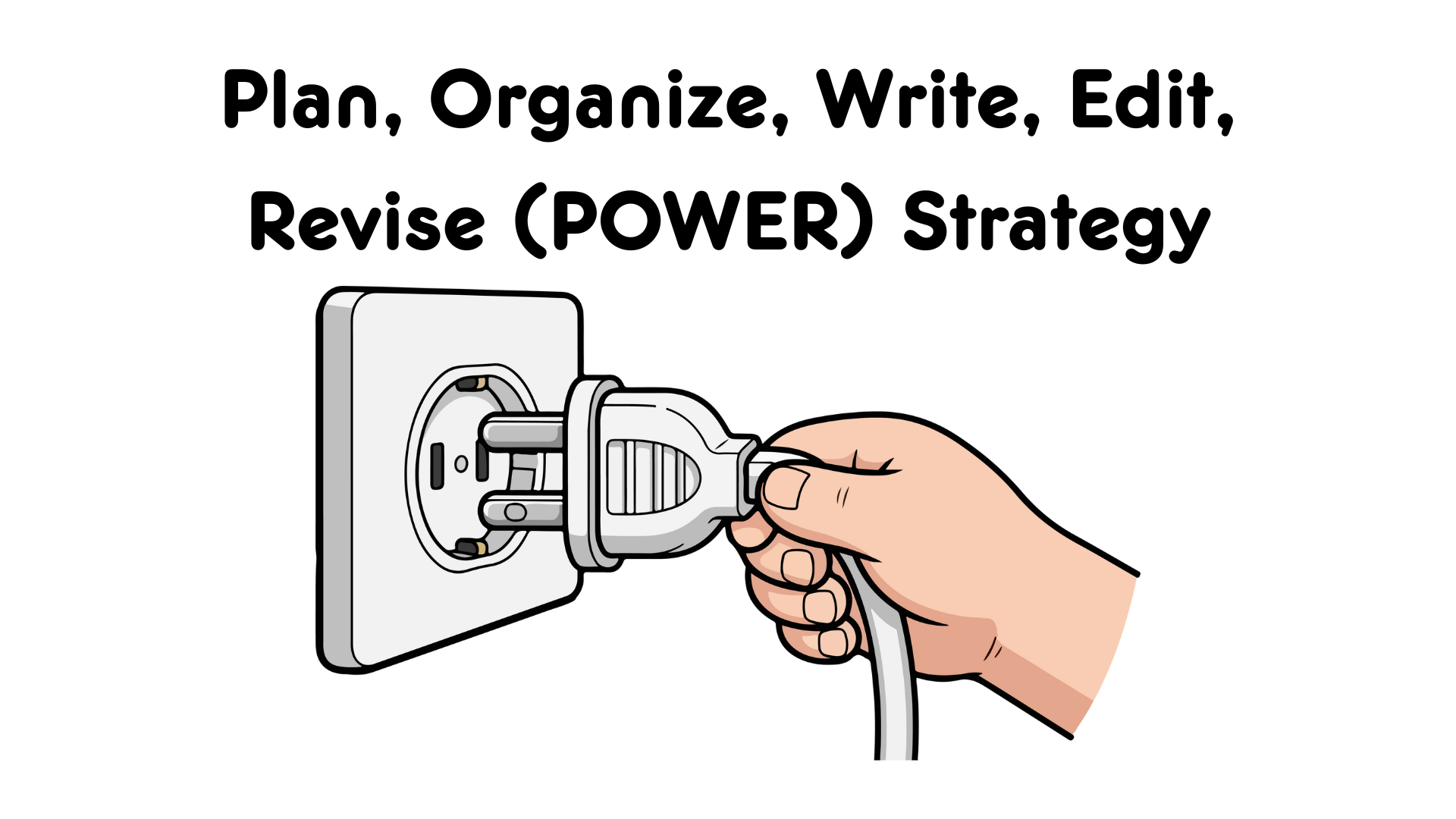Preview, List, Assign, Note, Search (PLANS) Strategy
Strategy Parameters
-
Genre: Informational and Expository Writing.
-
Grade Level: Upper Elementary through High School.
-
Writing Process: Planning and Drafting.
At-A-Glance
The PLANS strategy is a structured, step-by-step process that helps students organize their thinking before and during drafting. The strategy encourages metacognitive awareness by prompting intentional choices about content and expression, building confidence through a repeatable routine that supports eventual writing independence.
Learn More
Best Practices
-
Each PLANS step (Preview, List, Assign, Note, Search) explicitly with modeling and think-alouds for each phase.
-
Incorporate visuals and scaffolds such as the PLANS anchor chart, the FRAME graphic organizer, and step-by-step student handouts.
-
Check for understanding after each step by having students explain what they just completed (e.g., “Show me your numbered ideas after Assign”).
-
Encourage the use of speech-to-text tools during the Note step to reduce transcription barriers and help students focus on organization.
-
Allow multiple practice opportunities and be patient; students need repeated cycles through PLANS before it becomes automatic.
Common Pitfalls
-
Don’t skip the Preview, List, or Assign stages; jumping directly to drafting undermines the structured thinking the strategy is built on.
-
Don’t expect mastery after one lesson; students need repeated guided practice before they can independently apply PLANS.
-
Don’t assume all students will organize their ideas the same way; allow flexibility in how students arrange ideas in the Assign step.
-
Don’t treat PLANS as a one-size-fits-all tool; adapt the strategy for different writing tasks, topics, and learner needs.
-
Don’t neglect to use the FRAME graphic organizer, as its visual structure is key to reducing cognitive load and improving sequencing.
Implementation Tips
-
Collaborative Planning: Begin with collaborative group work for the Preview (topic, audience, purpose), List (brainstorming), and Assign (prioritizing order) steps to encourage brainstorming and shared organization of ideas. Use the FRAME graphic organizer during this phase to visually guide the extraction and arrangement of key points.
-
Independent Drafting: Transition to independent writing during the Note step, where students expand their planned notes into full paragraphs, including topic sentences and transitions. Encourage the use of speech-to-text tools during this phase for students who benefit from expressing their ideas verbally.
-
Peer Review and Revision: After drafting, return to group work for the Search (revision) step through structured peer review and feedback. This combination of collaborative planning and independent drafting, followed by collaborative revision, helps students internalize the strategy while building confidence and independence.
- Guided Practice with Supports: Start with a shared writing prompt and guide the entire class through each step of the POW process, helping them brainstorm and organize their notes using a graphic organizer. Use structured techniques like think-pair-share to facilitate idea generation and provide support during early practice.
- Check for Understanding and Apply: Share strong student examples to highlight effective use of the strategy and assign independent writing tasks with new prompts. Circulate to offer feedback and remind students to actively apply POW before and during their writing.
- Reflection and Integration: Conclude the activity with a short student reflection on how the strategy helped improve their writing or organization. This helps students internalize the process and prepares them to use the versatile tool across content areas and for more complex writing strategies.





